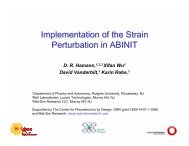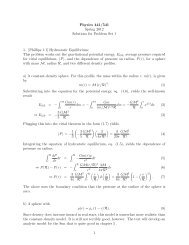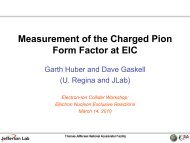MasteringPhysics: Print View with Answers
MasteringPhysics: Print View with Answers
MasteringPhysics: Print View with Answers
You also want an ePaper? Increase the reach of your titles
YUMPU automatically turns print PDFs into web optimized ePapers that Google loves.
Signed in as Jolie Cizewski , Instructor Help Sign Out<br />
RUPHYS2272013 ( RUPHYS2272013 )<br />
My Courses Course Settings<br />
Course Home Assignments Roster Gradebook Item Library<br />
University Physics <strong>with</strong> Modern Physics, 13e<br />
Young/Freedman<br />
Instructor Resources eText Study Area<br />
H3 Electric Potential (23.1-5) [ Edit ]<br />
Overview Summary <strong>View</strong> Diagnostics <strong>View</strong> <strong>Print</strong> <strong>View</strong> <strong>with</strong> <strong>Answers</strong><br />
H3 Electric Potential (23.1-5)<br />
Due: 11:59pm on Monday, September 23, 2013<br />
You will receive no credit for items you complete after the assignment is due. Grading Policy<br />
Exercise 23.2<br />
Description: A point charge q_1 is held stationary at the origin. A second charge q_2 is placed at point a, and the electric potential energy of the pair<br />
of charges is + 5.4 * 10^( - 8) J. When the second charge is moved to point b, the electric force on the...<br />
A point charge q 1 is held stationary at the origin. A second charge q 2 is placed at point a, and the electric potential energy of the pair of charges is<br />
+5.4 × 10 −8 J. When the second charge is moved to point b, the electric force on the charge does −1.9 × 10 −8 J of work.<br />
Part A<br />
What is the electric potential energy of the pair of charges when the second charge is at point b?<br />
Express your answer using two significant figures.<br />
ANSWER:<br />
7.3×10 −8 J<br />
Electric Potential Ranking Task<br />
Description: Short conceptual problem involving electrical potentials of point charges. (ranking task)<br />
In the figurethere are two point charges, +q and −q. There are also six positions, labeled A through F, at various distances from the two point charges. You<br />
will be asked about the electric potential at the different points (A through F).
Part A<br />
Rank the locations A to F on the basis of the electric potential at each point. Rank positive electric potentials as higher than negative electric potentials.<br />
Rank the locations from highest to lowest potential. To rank items as equivalent, overlap them.<br />
Hint 1. Definition of electric potential<br />
The electric potential surrounding a point charge is defined by<br />
V = kq<br />
r<br />
,<br />
where q is the source charge creating the electric potential and r is the distance between the source charge and the point of interest. If more<br />
than one source is present, determine the electric potential from each source and sum the results.<br />
Hint 2. Conceptualizing electric potential<br />
Because positive charges create positive electric potentials in their vicinity and negative charges create negative potentials in their vicinity,<br />
electric potential is sometimes visualized as a sort of "elevation." Positive charges represent mountain peaks and negative charges deep<br />
valleys. In this picture, when you are close to a positive charge, you are "high up" and have a higher positive potential. Conversely, near a<br />
negative charge, you are deep in a "valley" and have a negative potential. The utility of this picture becomes clearer when we begin to think of<br />
charges moving through a region of space containing an electric potential. Just as particles naturally roll downhill, converting gravitational<br />
potential energy into kinetic energy, positively charged particles naturally "roll downhill" as well, toward regions of lower electric potential,<br />
converting electrical potential energy into kinetic energy.<br />
ANSWER:<br />
Electric Potential Energy of Three Point Charges<br />
Description: Calculate the electric potential energy of three identical charges at the corners of an equilateral triangle.
Part A<br />
Three equal point charges, each <strong>with</strong> charge 1.45 µC , are placed at the vertices of an equilateral triangle whose sides are of length 0.600 m . What is<br />
the electric potential energy U of the system? (Take as zero the potential energy of the three charges when they are infinitely far apart.)<br />
Use ϵ = 8.85×10 −12 C 2<br />
0 for the permittivity of free space.<br />
N⋅m 2 U 12<br />
Hint 1. How to approach the problem<br />
Use the equation for the electric potential energy between two point charges to calculate the energy for each interaction between two of the<br />
three point charges. The sum of these energies will be the total electric potential energy. Be careful to avoid double counting.<br />
Hint 2. Find the electric potential energy of one pair<br />
Assume that one charge is interacting <strong>with</strong> a second charge, ignoring any effects from the third charge. What is the electric potential energy<br />
for this single interaction?<br />
Express your answer in joules to three significant figures.<br />
Hint 1. Electric potential energy of a pair of charges<br />
Recall that the electric potential energy U between two charges q 1 and q 2 separated by a distance r is given by the formula<br />
U = 1<br />
q 1 q 2 .<br />
4πϵ 0 r<br />
ANSWER:<br />
U = = 3.15×10 −2<br />
12<br />
J<br />
Since the charges are at the vertices of an equilateral triangle, each pair of charges will be 0.600 m apart, no matter which two charges are<br />
selected. This fact, coupled <strong>with</strong> the fact that the charges are identical, means that all pair interactions are identical.<br />
Hint 3. How many interactions are there?<br />
How many pair interactions are there for the three charges?<br />
Hint 1. Double counting<br />
It is important to keep in mind that a pair of charges can interact only once, so if the first charge is interacting <strong>with</strong> the second charge for<br />
one pair, the interaction of the second charge <strong>with</strong> the first charge cannot also be used, since the pair has already been counted.<br />
ANSWER:<br />
3<br />
ANSWER:<br />
U = = 9.45×10 −2<br />
J<br />
The potential energy is usually written<br />
q<br />
U = ∑<br />
i q j<br />
i
Exercise 23.29<br />
Description: A uniform electric field has magnitude E and is directed in the negative x direction. The potential difference between point a (at x= x_a)<br />
and point b (at x= x_b) is V. (a) Which point, a or b, is at the higher potential? (b) Calculate the...<br />
A uniform electric field has magnitude E and is directed in the negative x direction. The potential difference between point a (at x = 0.70 m ) and point b<br />
(at x = 0.95 m ) is 260 V .<br />
Part A<br />
Which point, a or b, is at the higher potential?<br />
ANSWER:<br />
a<br />
b<br />
Part B<br />
Calculate the value of E.<br />
Express your answer using two significant figures.<br />
ANSWER:<br />
E = = 1000<br />
N/C<br />
Part C<br />
A negative point charge q = −0.200 µC is moved from b to a. Calculate the work done on the point charge by the electric field.<br />
Express your answer using two significant figures.<br />
ANSWER:<br />
W = = −5.2×10 −5<br />
J<br />
Electric Fields and Equipotential Surfaces<br />
Description: Find the work done to move a unit charge from and to given points on a diagram showing equipotential surfaces, and compare the<br />
magnitude of the electric field at these points.<br />
The dashed lines in the diagram represent cross sections of equipotential surfaces drawn in 1 V increments.<br />
Part A<br />
W AB<br />
C
What is the work W AB done by the electric force to move a 1 C charge from A to B?<br />
Express your answer in joules.<br />
Hint 1. Find the potential difference between A and B<br />
What is the potential difference V A − V B between point A and point B?<br />
Express your answer in volts.<br />
Hint 1. Equipotential surfaces<br />
Recall that an equipotential surface is a surface on which the electric potential is the same at every point.<br />
ANSWER:<br />
V A − V B = 0 V<br />
Hint 2. Potential difference and work<br />
Recall that the potential difference (in volts) between a point a and a point b equals the work (in joules) done by the electric force to move a 1 C<br />
charge from a to b.<br />
ANSWER:<br />
W AB = 0<br />
J<br />
Part B<br />
What is the work W AD done by the electric force to move a 1 C charge from A to D?<br />
Express your answer in joules.<br />
Hint 1. Find the potential difference between A and D<br />
What is the potential difference V D − V A between point A and point D?<br />
Express your answer in volts.<br />
ANSWER:<br />
V D − V A = -1 V<br />
Hint 2. Potential difference and work<br />
Recall that the electric potential energy difference between any two points is equal to the negative of the work done by the electric force as a<br />
charged object moves between those two points. If we combine this <strong>with</strong> the relationship between electric potential energy and electric potential<br />
we have: W AD, by electric force = −∆V AD Q<br />
ANSWER:<br />
W AD = 1<br />
J<br />
Part C<br />
The magnitude of the electric field at point C is<br />
Hint 1. Electric field and equipotential surfaces<br />
Since the diagram shows equal potential differences between adjacent surfaces, equal amounts of work are done to move a particular charge<br />
from one surface to the next adjacent one. It follows then that if the equipotentials are closer together, the electric force does the same amount<br />
of work in a smaller displacement than if the equipotentials were farther apart. Therefore, the electric force, as well as the corresponding electric
field, has a larger magnitude.<br />
ANSWER:<br />
greater than the magnitude of the electric field at point B.<br />
less than the magnitude of the electric field at point B.<br />
equal to the magnitude of the electric field at point B.<br />
unknown because the value of the electric potential at point C is unknown.<br />
Problem 23.32<br />
Description: A total electric charge of q is distributed uniformly over the surface of a metal sphere <strong>with</strong> a radius of r. The potential is zero at a point at<br />
infinity. (a) Find the value of the potential at r_1 from the center of the sphere. (b) Find the value...<br />
A total electric charge of 4.10 nC is distributed uniformly over the surface of a metal sphere <strong>with</strong> a radius of 22.0 cm . The potential is zero at a point at<br />
infinity.<br />
Part A<br />
Find the value of the potential at 53.0 cm from the center of the sphere.<br />
ANSWER:<br />
= 69.5 V<br />
Part B<br />
Find the value of the potential at 22.0 cm from the center of the sphere.<br />
ANSWER:<br />
= 168 V<br />
Part C<br />
Find the value of the potential at 11.0 cm from the center of the sphere.<br />
ANSWER:<br />
= 168 V<br />
Exercise 23.34<br />
Description: An infinitely long line of charge has linear charge density lambda. A proton (mass m_p, charge e) is r from the line and moving directly<br />
toward the line at v. (a) Calculate the proton’s initial kinetic energy. (b) How close does the proton get to...<br />
An infinitely long line of charge has linear charge density 3.00×10 −12 C/m . A proton (mass 1.67×10 −27 kg , charge e) is 13.5 cm from the line and moving<br />
directly toward the line at 2500 m/s .<br />
Part A<br />
Calculate the proton’s initial kinetic energy.<br />
Express your answer numerically in joules to four significant figures.<br />
ANSWER:
K = = 5.219×10 −21<br />
J<br />
Part B<br />
How close does the proton get to the line of charge?<br />
Express your answer numerically in meters to three significant figures.<br />
ANSWER:<br />
r = = 7.37×10 −2<br />
m<br />
Problem 23.37<br />
Description: A potential difference of V is established between parallel plates in air. (a) If the air becomes electrically conducting when the electric field<br />
exceeds E, what is the minimum separation of the plates? (b) When the separation has the minimum value...<br />
A potential difference of 5.05 kV is established between parallel plates in air.<br />
Part A<br />
If the air becomes electrically conducting when the electric field exceeds 2.90×10 6 V/m , what is the minimum separation of the plates?<br />
ANSWER:<br />
= 1.74×10 −3 m<br />
Part B<br />
When the separation has the minimum value calculated in part (a), what is the surface charge density on each plate?<br />
Use 8.85×10 −12 F/m for the permittivity of free space.<br />
ANSWER:<br />
= 2.57×10 −5<br />
C/m 2 V(x,y,z) = Axy − B + Cy<br />
Also accepted: = 1.32×10 5 , = 9.87×10 4<br />
Exercise 23.47<br />
Description: In a certain region of space, the electric potential is V( (x, y, z) ) = Axy - Bx^2 + Cy, where A, B, and C are positive constants. (a)<br />
Calculate the x-component of the electric field. (b) Calculate the y-component of the electric field. (c)...<br />
In a certain region of space, the electric potential is x 2 , where A, B, and C are positive constants.<br />
Part A<br />
Calculate the x-component of the electric field.<br />
Express your answer in terms of the given quantities.<br />
ANSWER:<br />
E x =
Part B<br />
Calculate the y-component of the electric field.<br />
Express your answer in terms of the given quantities.<br />
ANSWER:<br />
E y =<br />
Part C<br />
Calculate the z-component of the electric field.<br />
Express your answer in terms of the given quantities.<br />
ANSWER:<br />
E z = 0<br />
Part D<br />
At which point is the electric field equal to zero?<br />
ANSWER:<br />
x = 0 , y = 0 , z = 0<br />
x = −C/A , y = 0 , z = −2BC/A 2<br />
x = −C/A , y = −2BC/<br />
, z = C/A<br />
A 2 a Q<br />
Problem 23.70<br />
Description: A thin insulating rod is bent into a semicircular arc of radius a, and a total electric charge Q is distributed uniformly along the rod. (a)<br />
Calculate the potential at the center of curvature of the arc if the potential is assumed to be zero at...<br />
A thin insulating rod is bent into a semicircular arc of radius , and a total electric charge<br />
is distributed uniformly along the rod.<br />
Part A<br />
Calculate the potential at the center of curvature of the arc if the potential is assumed to be zero at infinity.<br />
Express your answer in terms of the given quantities and appropriate constants.<br />
ANSWER:<br />
V =<br />
Also accepted: ,<br />
Problem 23.79<br />
Description: Electric charge is distributed uniformly along a thin rod of length a, <strong>with</strong> total charge Q. Take the potential to be zero at infinity. Find the<br />
potential at the following points: (the figure ). (a) Find the potential at the point P, a distance x to...<br />
Electric charge is distributed uniformly along a thin rod of length a, <strong>with</strong> total charge Q.<br />
Take the potential to be zero at infinity. Find the potential at the<br />
following points: (the figure ).
Part A<br />
Find the potential at the point P, a distance x to the right of the rod.<br />
Express your answer in terms of the given quantities and appropriate constants.<br />
ANSWER:<br />
V =<br />
Also accepted: ,<br />
Part B<br />
Find the potential at the point R, a distance y above the right-hand end of the rod.<br />
Express your answer in terms of the given quantities and appropriate constants.<br />
ANSWER:<br />
V =<br />
Also accepted: ,<br />
Part C<br />
In part A, what does your result reduce to as x becomes much larger than a?<br />
Express your answer in terms of the given quantities and appropriate constants.<br />
ANSWER:<br />
V =<br />
Also accepted: ,<br />
Part D<br />
In part B, what does your result reduce to as y becomes much larger than a?
Express your answer in terms of the given quantities and appropriate constants.<br />
ANSWER:<br />
V =<br />
Also accepted: ,<br />
Copyright © 2013 Pearson. All rights reserved.<br />
Legal Notice Privacy Policy Permissions Support


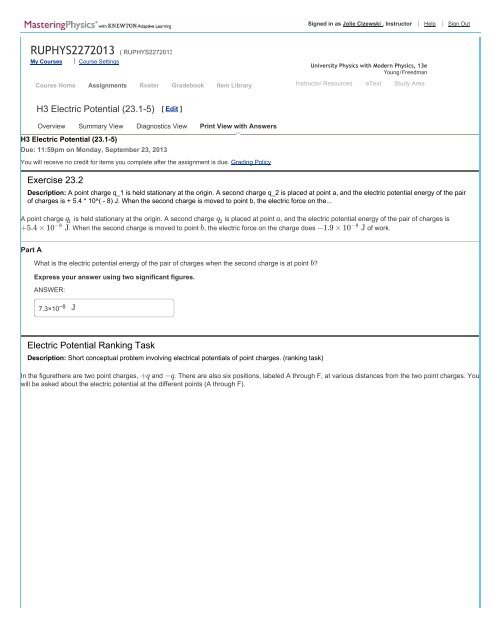
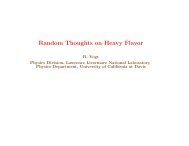

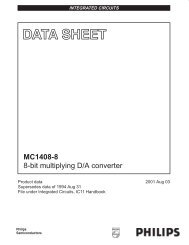

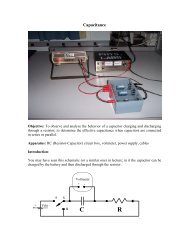

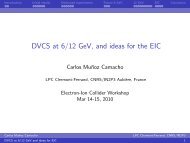
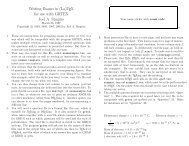
![More Effective C++ [Meyers96]](https://img.yumpu.com/25323611/1/184x260/more-effective-c-meyers96.jpg?quality=85)


